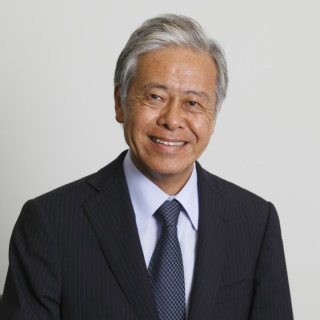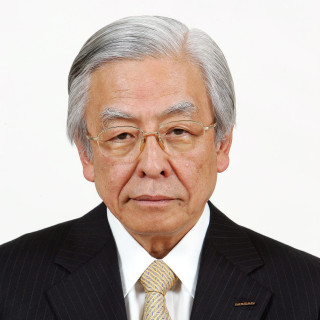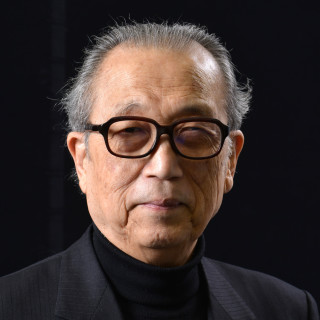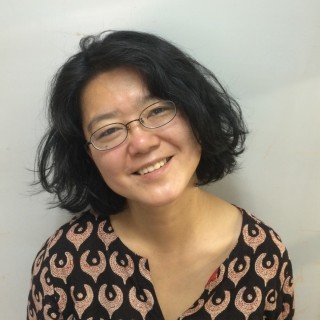Hiroyasu Ando
President, The Japan Foundation
I would like to express my sincere gratitude to your continuous interest in Performing Arts Meeting in Yokohama (TPAM).
TPAM 2017 continues to focus its attention on Asia, involving programs with a diverse range of artists from countries such as Japan, Indonesia, Thailand, Korea, Vietnam, and Cambodia. One of the notable programs this year is the world premiere of Taipei Notes at Yokohama Museum of Art, co-produced by Oriza Hirata (Japan) and Voleur du Feu Theatre (Taiwan). We also bring to you Fever Room, the first stage production of noted Thai artist and filmmaker Apichatpong Weerasethakul, which has received international acclaim since its premiere in 2015 at the opening of the Asian Arts Theatre in Gwangju, Korea.
This year, we will further enhance TPAM’s role to build and expand networks; to heighten TPAM’s potential into a more useful platform for all those who participate. With its mission to generate collaborations in Asia, the Japan Foundation Asia Center will again invite 50 or so presenters from across the world to TPAM. I hope that this year’s edition will serve as a hub where participants, particularly domestic, cross paths toward building new partnerships.
I trust that TPAM will firmly establish its presence as the international platform for contemporary performing arts in Asia; a platform where annual visits to Yokohama in February will become habitual for all professionals in the field.
Itaru Koeda
President, Kanagawa Arts Foundation
It is the seventh year since the Performing Arts Meeting started to be held in Yokoyama. We once again express our sincere appreciation for the outstanding support and service to the event, in which we are participating as one of the organizers, since the opening of KAAT Kanagawa Arts Theatre in 2011.
This year “TPAM Direction” features contemporary performing arts works by prominent Asian artists, including the Japan premiere of Fever Room, the first theatre work by the Thai filmmaker/artist Apichatpong Weerasethakul. We offer the full support and facilities of KAAT Kanagawa Arts Theatre and making this event a success.
The Theatre’s missions are “creation of art, development of human resources and area development through generation of excitement.” We will continue to support arts and culture as we work to propel the ideals of open society forward. We sincerely hope this event will promote the implementation of cultural exchange between the participants.
Kiichi Sumikawa
President, Yokohama Arts Foundation
There is a climate in Yokohama that constantly gives rise to “something new” — this is a city that provides the opportunities for testing experimental art and transmitting this art to the rest of the world. The mission of our Foundation is to make Yokohama a culturally rich and appealing city through various artistic and cultural projects, and it is a great pleasure for us to again this year participate in the Performing Arts Meeting in Yokohama as one of the organizers and to be able to contribute to forming of an international platform for performing arts.
The seventh edition in Yokohama, as in other years, features diverse programs of which two pillars are to facilitate exchange between performing arts professionals and to introduce contemporary performing arts projects of Japan and the world. Joint projects with our Foundation’s facilities such as Yokohama Dance Collection, an Asian dance platform that we organize, and a performance in the Grand Gallery in Yokohama Museum of Art have also developed. We expect that TPAM will be a place for connecting various people who engage in performing arts and exploring new possibilities.
Hiromi Maruoka
Director, Performing Arts Meeting in Yokohama
President, Japan Center, Pacific Basin Arts Communication
TPAM has proclaimed its focus on Asia since 2015. I expect that each program information speaks for itself, but especially this year we have two epoch-making works that have been receiving enthusiastic admiration across the world: Fever Room by Apichatpong Weerasethakul and BALABALA by Eko Supriyanto. The latter is the third international co-production that TPAM involves itself in, after Dancing with Death by Pichet Klunchun and Baling by Mark Teh.
The seating capacity of the two works and Taipei Notes (world premiere), an adaptation of Tokyo Notes by the writer Oriza Hirata himself, whose “Contemporary Colloquial Theatre” has influenced young theatre practitioners in Japan so much, is large enough to offer the works not only to the professionals but also to the public.
We have been trying to improve our programs with the keywords “Asia” and “contemporary” through TPAM Fringe (former TPAM Showcase), of which function as an open-call program of a platform has become clearer for participants who are interested in using it, TPAM Exchange that involves three network meetings from Europe, Asia and Japan this year, and TPAM Direction that has entered the domain of co-production while continuing to introduce diverse works in cooperation with the directors.
This Asian Focus was made possible at this scale thanks to, needless to say, the national cultural budget that has increased for a limited number of years until 2020, the year of the Olympic Games in Tokyo. Exploring a form that TPAM should take as a platform located in Asia to be still relevant after 2020, we would like not only to introduce Asia to the world but also to introduce the world to Asia in order to build international network through bilateral exchange.
Why does it have to be bilateral? To respond to that question and also to conclude this message, I would like to quote from The Location of “J Theatre”: Toward Transnational Mobilities by theatre critic Tadashi Uchino that was published in September this year:
“Transnational mobilities of the performing arts have to be accelerated. Artists need to already/always move: movements in the broadest sense including geographical moves and moves between genres, ideologies or methodologies. That is the only way to be able to conceive artistic practice that opens itself to both the West and Asia using Japan as a «medium» — simply a «medium» instead of a foundation, fixed point or standard.”




